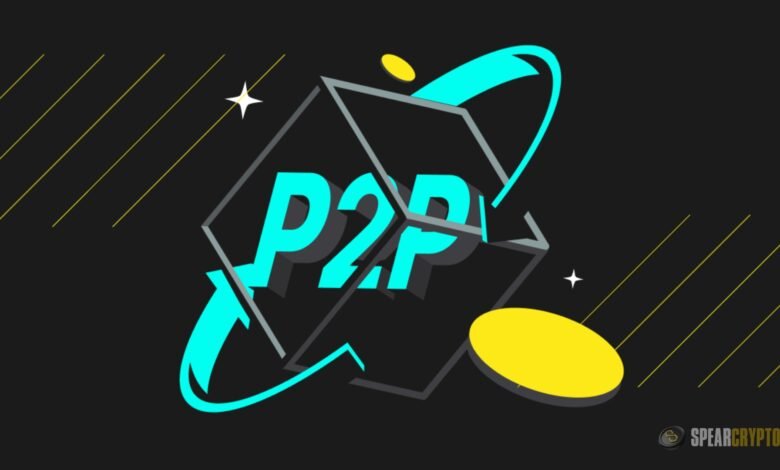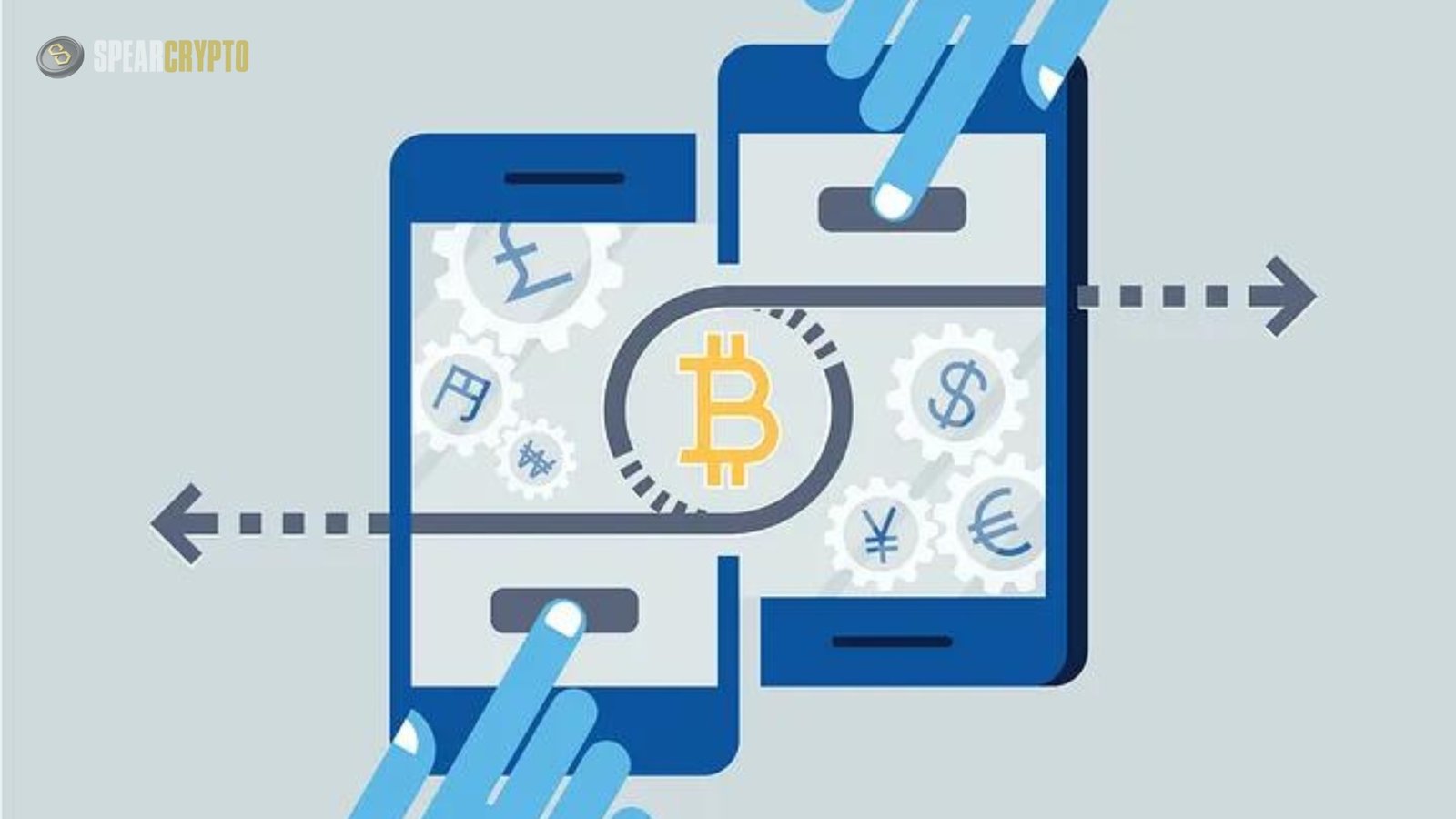
Cryptocurrency is one of the most recent and significant factors in the decentralized finance industry. The development of Bitcoin in 2009 established a new paradigm based on decentralized and permissionless transactions. Central to this innovation is the idea of peer-to-peer (P2P) cryptocurrency, which eliminates the middlemen—banks or governments—in the value exchange process. This essay will dive deeply into peer-to-peer (P2P) cryptocurrency, investigating its background, workings, benefits, drawbacks, and potential future position in the financial sector.
A peer-to-peer (P2P) cryptocurrency system is a decentralized network that enables users to exchange digital assets directly. Unlike traditional financial systems, which rely on central authorities such as banks to facilitate transactions, P2P networks allow individuals to send and receive value autonomously. This concept is fundamental to operating cryptocurrencies like Bitcoin, Ethereum, etc.
In a P2P network, every participant (or “node”) has equal authority, and no central server or entity controls the network. Participants validate transactions through consensus mechanisms such as proof-of-work (PoW) or proof-of-stake (PoS), ensuring all parties can trust the system without needing an intermediary.
The Origin of P2P Cryptocurrency
Satoshi Nakamoto’s 2008 Bitcoin whitepaper set up P2P cryptocurrency. Nakamoto sought to bypass financial institutions and allow parties to send electronic payments directly. The introduction of blockchain technology made this possible by allowing for decentralized and transparent transaction ledgers.
Bitcoin’s success spawned a wave of interest in P2P cryptocurrency systems. Subsequent projects such as Litecoin, Ripple, and Ethereum replicated and adapted their blockchain model, a distributed ledger maintained by a network of nodes. Each introduced new features while maintaining the original system’s decentralized and peer-to-peer nature.
How Does P2P Cryptocurrency Work?
To understand how P2P cryptocurrency works, it’s important to explore the role of blockchain technology and consensus mechanisms.
Blockchain Technology
The blockchain is the foundational technology behind most P2P cryptocurrencies. It is a distributed ledger that records all transactions across a network of computers. Every time a transaction is made, it is grouped with others in a “block.” These blocks are then linked together to form a “chain,” creating an immutable record of all transactions in the network.
Since the ledger is decentralized, it is maintained by numerous nodes worldwide, making it resistant to censorship or tampering. Each node has a copy of the entire blockchain, and any attempt to alter the transaction history would require control of over 50% of the network’s computing power, a feat known as a 51% attack. While theoretically possible, this level of control is extremely difficult to achieve in large networks like Bitcoin.
Consensus Mechanisms
For a P2P cryptocurrency network to function smoothly, there needs to be a method of ensuring that all participants agree on the state of the blockchain. This is achieved through consensus mechanisms. The two most commonly used mechanisms are:
- Proof-of-work (PoW) is the consensus algorithm used by Bitcoin and many other cryptocurrencies. In a PoW system, miners (network participants) compete to solve complex mathematical puzzles to validate transactions and add them to the blockchain. The first miner to solve the puzzle is rewarded with newly minted cryptocurrency. PoW is known for its security, but it requires significant computational resources and energy.
- Proof-of-Stake (PoS): PoS is an alternative to PoW and is used by networks like Ethereum 2.0. Instead of miners, PoS relies on “validators” who lock up (or “stake”) a certain amount of cryptocurrency as collateral. Validators are randomly chosen to validate transactions, and their likelihood of being selected is proportional to the amount they have staked. PoS is more energy-efficient than PoW, but it has been criticized for potentially favoring wealthier participants.
Advantages of P2P Cryptocurrency
The decentralized nature of P2P cryptocurrency offers several key advantages over traditional financial systems:
Elimination of Intermediaries
One of the most significant benefits of P2P cryptocurrency is the elimination of intermediaries. Traditional financial systems use banks, payment processors, and other third parties to facilitate transactions. These intermediaries often charge fees and impose restrictions on who can participate in the financial system.
With P2P cryptocurrency, individuals can transact directly with one another, bypassing the need for intermediaries. This reduces transaction costs and makes the system more inclusive, particularly for regions where access to banking services is limited.
Financial Sovereignty
P2P cryptocurrency empowers individuals by giving them full control over their financial assets. In traditional banking systems, governments or financial institutions can freeze or seize funds. With decentralized cryptocurrencies, individuals retain ownership of their private keys, meaning only they can access their funds.
This level of financial sovereignty is particularly appealing to those living in countries with unstable economies or oppressive governments. It allows them to store value in a secure, decentralized system that outside forces cannot easily manipulate.
Privacy and Security
While many traditional financial transactions require individuals to disclose personal information, P2P cryptocurrency transactions can be conducted pseudonymously. Although the blockchain records all transactions, the parties’ identities are not directly tied to their wallets, providing a level of privacy not available in conventional systems.
Additionally, cryptographic techniques ensure the security of P2P cryptocurrency networks. The blockchain’s decentralized nature makes it highly resistant to hacking, as there is no central point of failure.
Accessibility
P2P cryptocurrency is borderless and accessible to anyone with an internet connection. This opens up financial services to the unbanked and underbanked populations worldwide, providing an alternative way to save, send, and receive money.
Challenges Facing P2P Cryptocurrency
P2P cryptocurrency has many benefits, but it must overcome certain obstacles to become popular.
Scalability
One of the most pressing issues with P2P cryptocurrency is scalability. As more people use the network, the number of transactions increases, leading to congestion and higher transaction fees. Bitcoin, for example, can only process around seven transactions per second, which is significantly lower than traditional payment systems like Visa, which can handle thousands of transactions per second.
To address this issue, developers are working on various scaling solutions, such as the Lightning Network for Bitcoin and sharding for Ethereum. These technologies aim to increase transaction throughput without compromising the network’s decentralized nature.
Regulatory Uncertainty
The regulatory environment surrounding P2P cryptocurrency is still evolving. Governments worldwide have taken different approaches to cryptocurrency, ranging from outright bans to active promotion. This regulatory uncertainty challenges businesses and individuals who want to use cryptocurrencies as they must navigate a patchwork of laws and regulations.
Furthermore, some governments are concerned about using cryptocurrencies for illicit activities, such as money laundering and terrorism financing. This has led to calls for stricter regulations and increased surveillance of cryptocurrency transactions, which could undermine the privacy and autonomy that P2P systems provide.
Energy Consumption
How much energy proof-of-work cryptocurrencies like Bitcoin use is a dispute question. Processing power, which requires energy, is vital to mine. According to critics, the consumption of this amount of energy is not sustainable and is hazardous to the environment.
Proponents of peer-to-peer cryptocurrencies, on the other hand, point out that renewable energy sources may fuel mining and that the transition to proof-of-stake in networks such as Ethereum will drastically lower the amount of energy consumed.
Usability
While P2P cryptocurrency has the potential to revolutionize finance, its complexity can be a barrier to entry for the average person. Understanding how to use wallets and private keys and navigate exchanges can be daunting for those who are not tech-savvy. Improving the user experience and making cryptocurrency more accessible to the general public is crucial for mass adoption.
The Future of P2P Cryptocurrency
As we look toward the future, it’s clear that P2P cryptocurrency has the potential to play a central role in reshaping the global financial system. Decentralized finance (DeFi), a movement that seeks to create an open financial system using blockchain technology, is already demonstrating the power of P2P cryptocurrency.
DeFi platforms enable users to lend, borrow, trade, and earn interest on their crypto assets without intermediaries. These platforms, such as Aave, Compound, and Uniswap, operate entirely on smart contracts, allowing for trustless financial interactions. The rise of DeFi has shown that P2P cryptocurrency can go beyond simple transactions and become the foundation for a new, decentralized financial ecosystem.
Conclusion
When it comes to matters of money and finance, P2P cryptocurrency is a revolutionary innovation. These powerful peer-to-peer cryptocurrencies can transform financial systems by eliminating the need for intermediaries, allowing individuals to control their own money, and increasing access to financial services worldwide.
Before being widely used, peer-to-peer (P2P) cryptocurrencies must overcome four challenges: scalability, regulation, energy consumption, and usability. Continuous research and innovation will likely overcome these hurdles, enabling an open and inclusive financial future.
[sp_easyaccordion id=”3024″]







